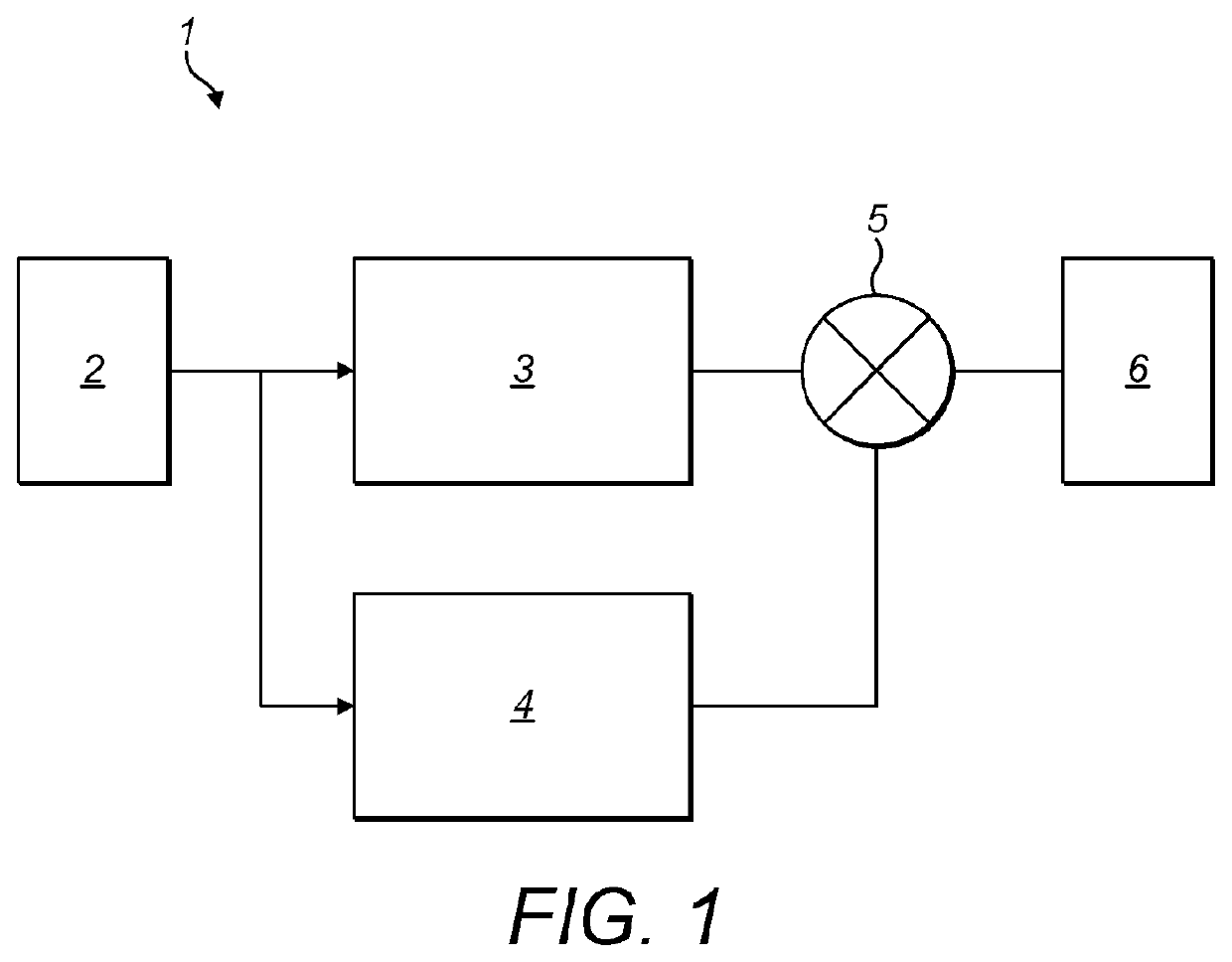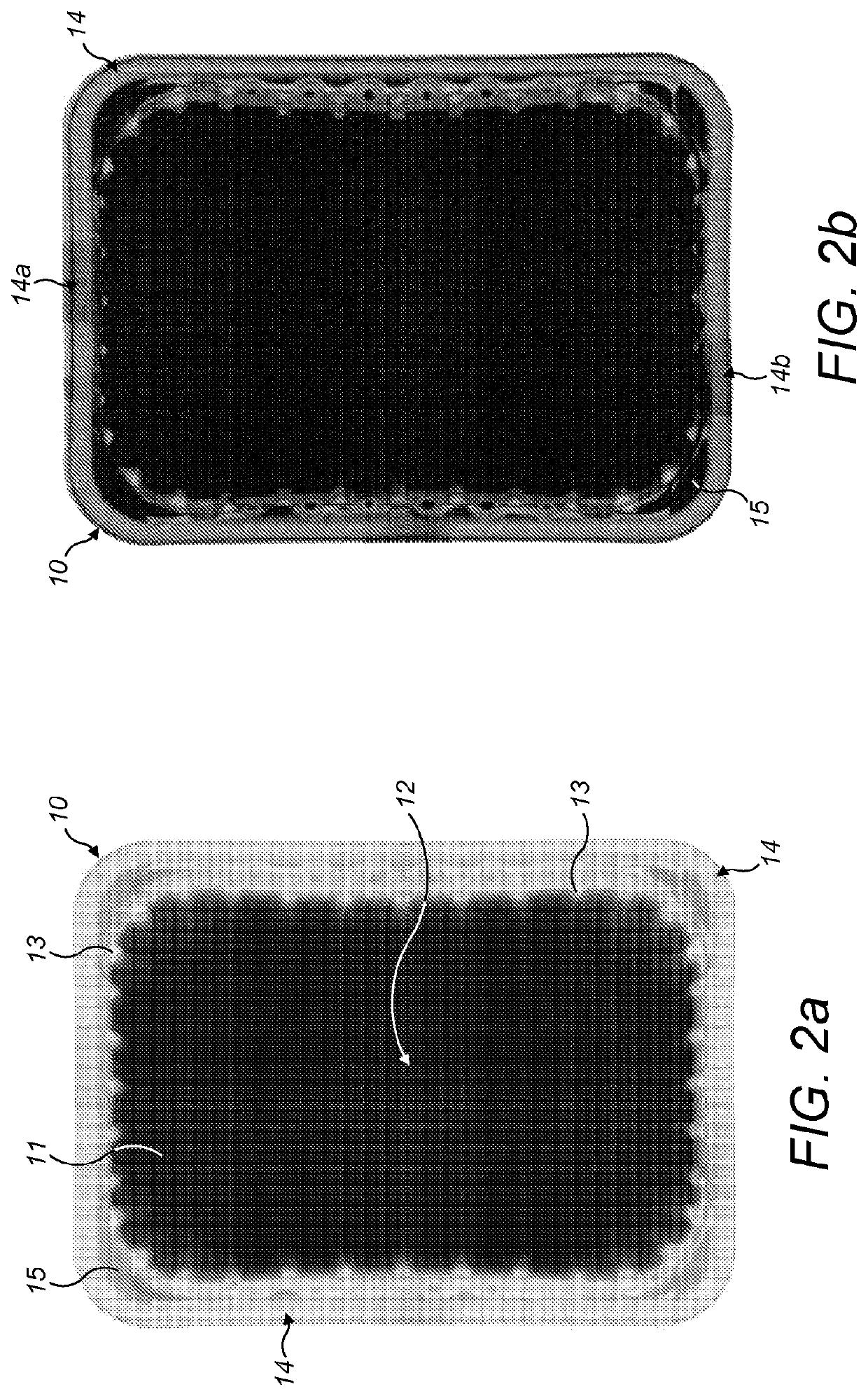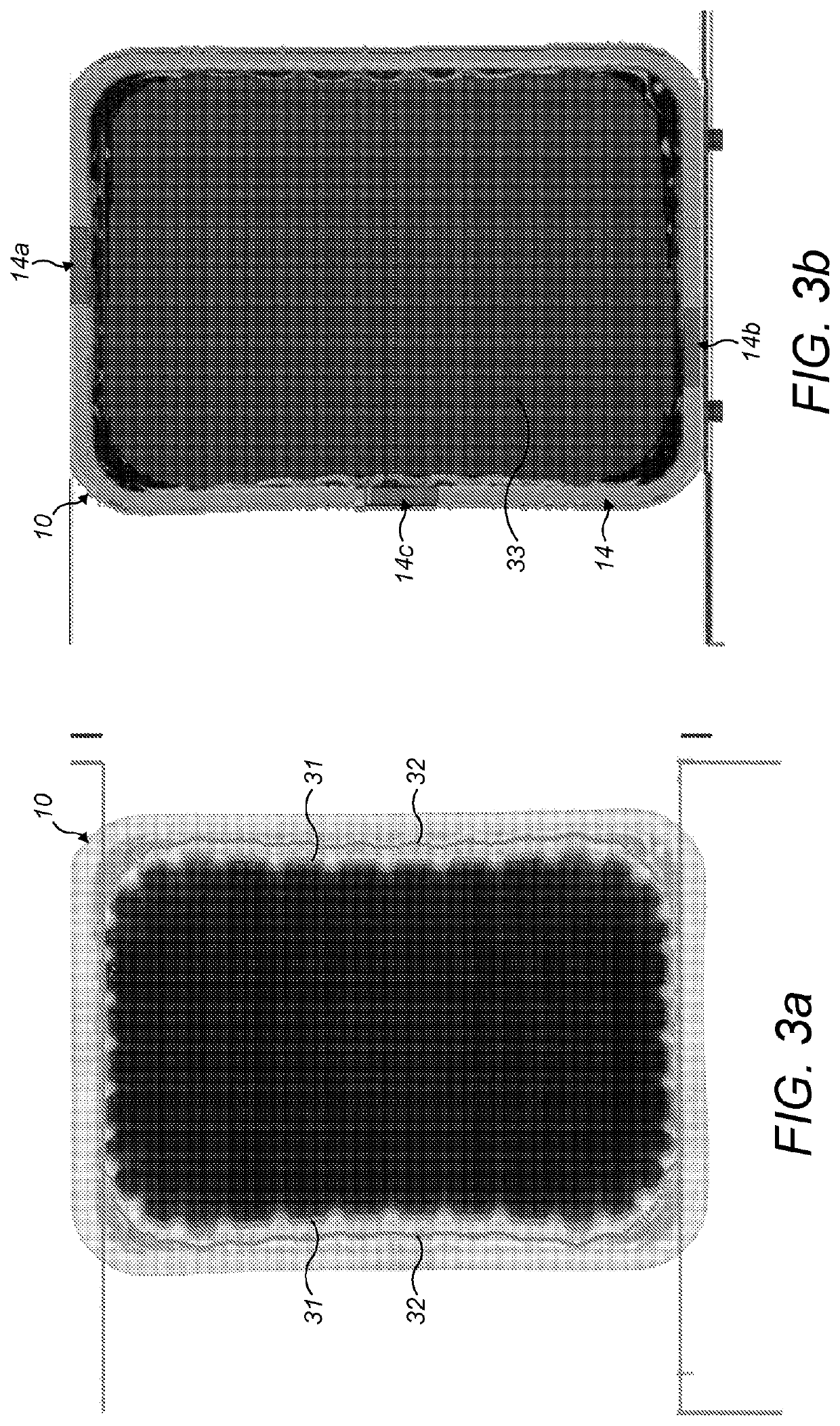Product scanning
a product and scanning technology, applied in the field of product scanning, can solve the problems of obscuring a dense contaminant, affecting the quality of products, and affecting the quality of products, and achieve the effect of different response characteristics and reducing noise levels
- Summary
- Abstract
- Description
- Claims
- Application Information
AI Technical Summary
Benefits of technology
Problems solved by technology
Method used
Image
Examples
Embodiment Construction
[0087]FIG. 1 shows an X-ray detector apparatus, identified generally by reference 1, which includes a low-energy, linear diode array 2, a first calibration and signal processor 3, a second calibration and signal processor 4, a data combiner 5, and output circuitry 6.
[0088]Linear diode arrays and the associated method for digitising X-ray images are known in the art; however, the present invention provides an improvement on standard X-ray detectors. The first calibration and signal processor 3 is optimised for a primary detection purpose, which is detection of dense contaminants in the contents of a product 10 to be scanned. The second calibration and signal processor 4 is optimised for a secondary detection purpose, such as detection of seal irregularities and / or contaminants in hotspots of the product 10. The outputs from calibration and signal processors 3; 4 is combined in the data combiner 5 before being sent on to the output circuitry 6.
[0089]The product 10, shown in FIGS. 2 to...
PUM
| Property | Measurement | Unit |
|---|---|---|
| size | aaaaa | aaaaa |
| thicknesses | aaaaa | aaaaa |
| energy | aaaaa | aaaaa |
Abstract
Description
Claims
Application Information
 Login to View More
Login to View More - R&D
- Intellectual Property
- Life Sciences
- Materials
- Tech Scout
- Unparalleled Data Quality
- Higher Quality Content
- 60% Fewer Hallucinations
Browse by: Latest US Patents, China's latest patents, Technical Efficacy Thesaurus, Application Domain, Technology Topic, Popular Technical Reports.
© 2025 PatSnap. All rights reserved.Legal|Privacy policy|Modern Slavery Act Transparency Statement|Sitemap|About US| Contact US: help@patsnap.com



